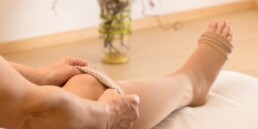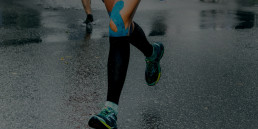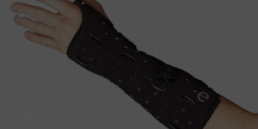Does your child often fall? Have you noticed that they walk with their feet turned inward or outward, or that a part of their skull seems flatter? It’s normal to be concerned. Take a deep breath, you’re in the right place. This guide is here to help you understand what pediatric orthotics are and how they can support your child’s proper development.
What are Pediatric Orthotics?
Pediatric orthoses are orthopedic medical devices designed to assist with motor development, correct specific abnormalities, or relieve pain associated with musculoskeletal disorders. Healthcare professionals often recommend them to improve posture, comfort, and mobility in children.
Different Types of Pediatric Orthotics
We offer three types of orthotics tailored to your child’s needs:
1. Helmets for Plagiocephaly
Plagiocephaly is a skull deformity that can appear in infants due to prolonged positions on one side of the head. The plagiocephaly helmet is a non-invasive solution that guides the growth of the skull and improves its symmetry.
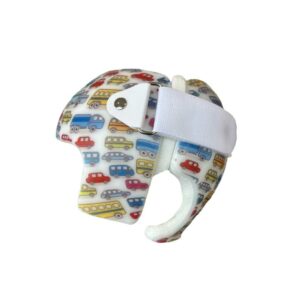
Plagiocephaly Helmet
Indications:
- Used to treat skull flattening in infants;
- Recommended between 4 and 12 months, when the skull is still malleable.
Adjustment Process:
- Initial Evaluation: A specialized orthotist determines the stage of cranial deformity through precise measurements.
- Moulding and Manufacturing: If treatment is indicated, we create a head mould for a custom helmet.
- Treatment Principle: Rather than applying pressure, the helmet guides the natural growth of the skull by relieving pressure from strategic areas.
- Regular Follow-ups: Adjustments are made at each consultation to accommodate the baby’s growth spurts.
- Ideal Treatment Period: Treatment between 4 and 9 months maximizes the effectiveness of the correction.
2. Foot Orthotics
Foot orthotics correct walking disorders and relieve foot and ankle pain. They are suitable for children with postural issues or growth-related pain. Custom-made, these insoles fit inside your child’s shoes and adjust to their size, body structure, and specific needs.
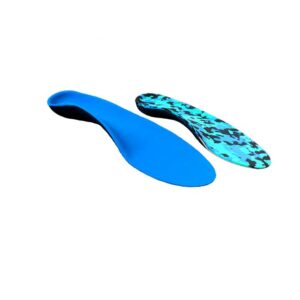
Foot orthotics
Indications:
- Scoliosis;
- Lower limb inequality;
- Flat feet or high arches;
- Ankle instability and frequent falls;
- Fatigue or pain during physical activity;
- Walking with feet turned inward or outward.
Benefits:
- Adaptable to the child’s growth;
- Promote healthy posture and proper motor development;
- Provide additional support to prevent muscle and joint pain.
3. Ankle-Foot Orthotics
Ankle-foot orthoses (AFO) are used to address certain musculoskeletal or neuromuscular disorders. They are customized and help your child walk more smoothly.
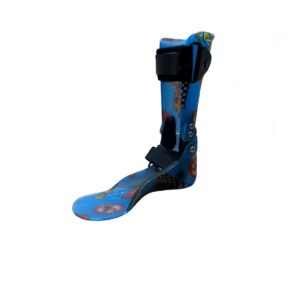
Tibial or Tibio-Pedal Orthosis
Indications:
- Tibial rotation (abnormal rotation of the leg bone);
- Metatarsus adductus (foot curved inward at the front of the foot);
- Clubfoot/equinus varus (foot turned inward and downward from birth);
- Other childhood disorders.
Benefits:
- Custom-made for optimal comfort;
- Improve posture and facilitate walking;
- Help enhance confidence and independence.
When Should You Consult a Professional?
Each child develops at their own pace, but sure signs may indicate that an orthosis could help improve movement, comfort, or correct a condition early on. Depending on the case, the evaluation can be done by an orthotist or in collaboration with a podiatrist, especially when foot or ankle pain persists despite basic care.
Situations Where We Recommend a Consultation
- Visible cranial asymmetry in an infant: One area of the skull seems flattened or misaligned.
- Unusual gait: The child walks on their toes, with feet turned inward or outward, or falls frequently.
- Persistent pain: Pain occurs in the feet, legs, or knees, especially after physical activity.
- Poor posture: Noticeable collapse of the arches, flat or curved feet.
- Motor delays or diagnosed disorders: Observing cerebral palsy, clubfoot, or unequal leg length.
- Medical recommendation: Your doctor or pediatrician refers you to an orthotist for a thorough evaluation.
Why Consult Early?
Early intervention often helps to:
- Prevent the worsening of certain conditions;
- Promote healthy and comfortable motor development;
- Correct abnormalities more easily during the growth phase.
Our team of orthotists is here to assess your child with care, precision, and compassion, offering the best solution to help them grow with confidence.
How Does Orthotic Fitting Work?
Fitting a pediatric orthotic is a carefully guided process designed to provide your child with maximum comfort and effectiveness. Here are the key steps:
Initial Consultation
It all begins with a meeting with a pediatric orthotist, who:
- Takes the time to discuss your child’s needs;
- Observes their posture, gait, or skull shape (depending on the type of orthosis);
- Provides a functional diagnosis and explains possible options with clarity and care.
Personalized Measurement
Depending on the recommended orthosis, a custom mould (plaster or 3d scan) is created to:
- Faithfully replicate your child’s morphology;
- Ensure a precise fit for comfort and effectiveness.
Laboratory Manufacturing
Once the measurements are taken, our professionals craft the orthosis in our laboratories in Montreal or Sherbrooke. The turnaround time is quick: approximately 10 business days. During this time, we’re available to answer any questions you may have.
Trial and Adjustments
At the fitting appointment:
- The child tries on the orthosis;
- We check for fit, freedom of movement, and the absence of pressure points;
- We make on-site adjustments if necessary.
Care and Follow-up of Pediatric Orthotics
Taking care of your child’s orthosis is essential to ensure its effectiveness, durability, and everyday comfort. Here’s what you need to know:
Daily Care
- Clean the orthosis regularly with a soft cloth and mild soap, avoiding those with fragrances or harsh chemicals.
- Let it air dry, away from direct heat sources (e.g., hair dryers, radiators), to prevent the material from deforming.
- Avoid excessive water; the orthosis should not be soaked. Localized cleaning is sufficient.
- Visually inspect it for signs of wear, cracks, or loose components, such as Velcro and pads.
- Check your child’s skin hygiene before each wear: it should be clean, dry, and irritation-free.
Regular Follow-up and Support
- Rapid growth = Frequent Adjustments: Your child’s body changes quickly, and an adjustment may be necessary even after just a few weeks.
- Follow-up appointments: Plan regular visits with the orthotist to check the device’s fit, functionality, and comfort.
- Adjust your wearing schedule: Some orthotics require a gradual wearing period, starting with 1-2 hours per day.
Why Choose Our Orthotics Laboratory?
- Educational approach towards children and parents;
- Over 10 years of expertise in promoting children’s well-being;
- Custom diagnosis to determine your child’s needs;
- On-site manufacturing, ensuring fast service and optimal quality control;
- Collaboration with health specialists throughout Quebec.
Don’t face your doubts alone—talk to us about your child. We’re happy to take the time to evaluate their situation with kindness and precision. Contact EVO today for a consultation and get a comfortable, tailored solution.
FAQ on Pediatric Orthotics
At what age can a child wear pediatric orthotics?
It depends on the type of orthosis. For example, we recommend helmets for plagiocephaly between 4 and 12 months. Children may wear foot and tibial orthotics as soon as postural or walking issues are detected.
How long does it take to adjust to an orthosis?
Adjustment time varies depending on the child and the type of orthosis. Some adapt in a few days, while others may need several weeks with regular follow-ups.
Do orthotics hurt?
No, a well-fitted orthosis should not cause pain. However, the child may feel some mild pressure or discomfort initially. If your child experiences persistent pain, contact our orthotists for adjustments or personalized support.
How do I maintain my child’s orthosis?
To care for your child’s orthosis, clean it regularly with a damp cloth and mild soap. Let it air dry, avoid using abrasive products, and monitor it for signs of wear or irritation.
How can I make an appointment?
Contact us online or visit one of our clinics in Montreal or Sherbrooke. We look forward to welcoming you!
Additional resources
Share this article
Related posts
May 30 2025
The Lymphedema Guide
January 29 2020
Compression socks: for what kind of symptoms?
July 12 2018
Is There an Alternative to Plaster for Bone Fractures?
As plaster casts hinder everyday life, what are the alternatives...
